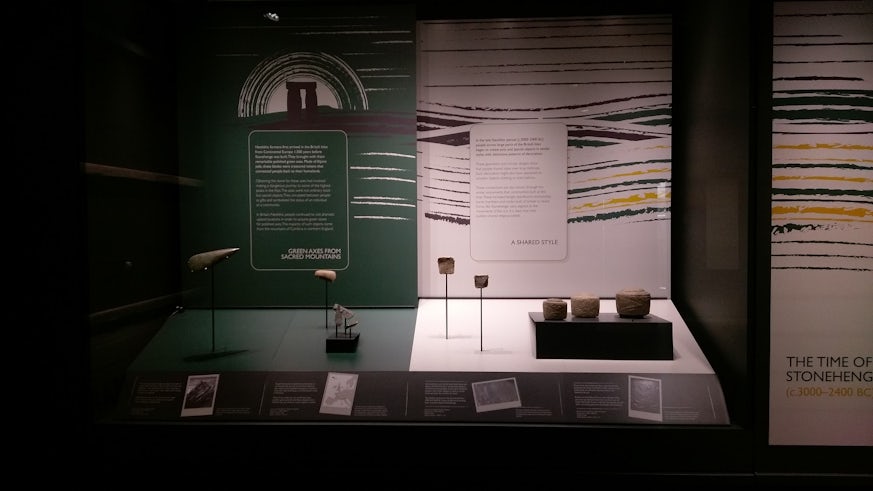Making Connections: Stonehenge in its Prehistoric World
20 November 2018

Archaeologist undertaking PhD tells story of links between the British Isles and Europe in new exhibition at world famous heritage site
Life as an archaeologist means no two days are the same. While undertaking her PhD at Cardiff, Susan Greaney has been co-curating the first exhibition mounted jointly by English Heritage and the British Museum.
No stranger to the most famous of all heritage sites, Senior Properties Historian at English Heritage Susan has worked on projects at Stonehenge since 2009.
Explaining the idea behind the exhibition, Susan said: “Throughout the Neolithic and Bronze Age, Stonehenge stood at the centre of this constantly changing ebb and flow of objects, styles, people and ideas.”
“From relatively insular communities with what appears to be little communication beyond the British Isles, to mass migrations and the sharing of raw materials and finished artefacts, our ancestors have been making and breaking relationships with Continental Europe for thousands of years.”
The process of research and writing the exhibition drew on the archaeologist’s wider knowledge of Neolithic Britain and Ireland gained through her PhD.
“My favourite artefacts are the Folkton Drums, which date from the late Neolithic (c3000BC) and were found with the burial of a child in Yorkshire. These three intricately decorated chalk cylinders feature spirals, lozenges and stylised faces in a style of decoration only seen in the British Isles. Being able to handle these as part of working on the exhibition was a dream come true!” she added.
Making Connections: Stonehenge in its Prehistoric World highlights the shifting relationship between the British Isles and Continental Europe during the Neolithic and Bronze Ages.
Open for six months, the exhibition shows different periods of connection and relative isolation between the ancient British Isles and mainland Europe through the display of its objects. Among the highly prized objects on display are a 6500-year-old jade axe sourced from stone in the Italian Alps and an elaborate gold neckpiece made around 4000 years ago.
When Stonehenge was built in the late Neolithic, communities living in the British Isles appear to have been relatively insular. Although people were traveling widely and exchanging ideas from Orkney to Southern England, there is little evidence for extensive communication with people living in continental Europe.
By contrast, the early Neolithic and early Bronze Age saw mass migrations of people and the arrival of the first farmers and earliest metal-workers. Artefacts from this period reveal that objects, styles and religious beliefs were being shared widely with Europe.
Recent DNA analysis indicates that the Beaker culture communities, who brought Bronze Age technology to the British Isles 4,500 years ago, were part of a migration that almost completely replaced the communities of the British Isles in the course of a few centuries.
Curated by Susan Greaney FSA (English Heritage) and Neil Wilkin FSA (British Museum), Making Connections: Stonehenge in its Prehistoric World is at the Stonehenge visitor centre until 21 April 2019.
The School of History, Archaeology and Religion offers a wide range of postgraduate study including Masters, MPhil and PhD in Archaeology.